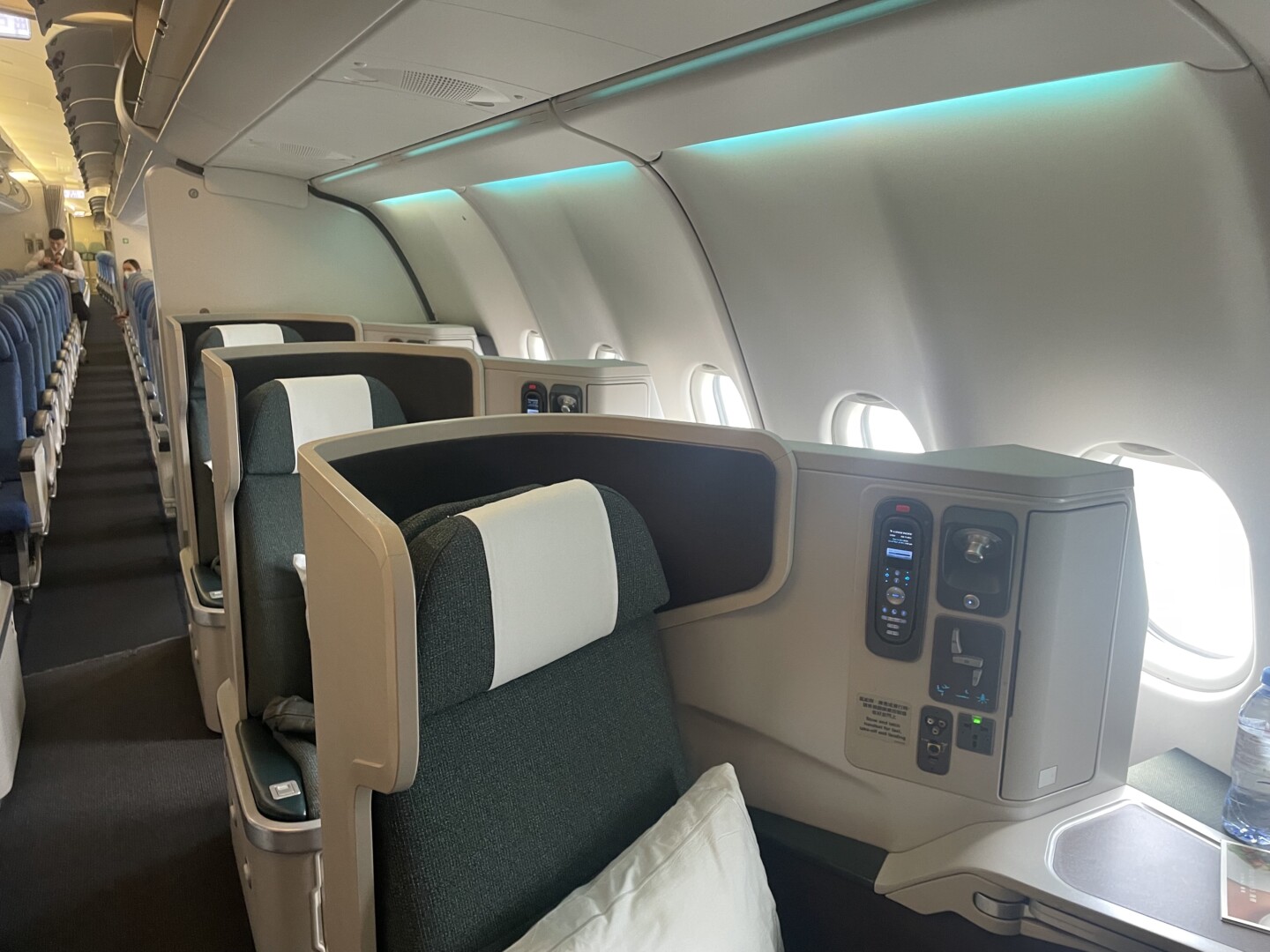Update: It looks like Cathay Pacific will be installing a fully-flat, regional Business Class product across its Airbus A330 fleet starting from 2026. I’m glad to see that Cathay is finally catching up with the competition in the East Asia region and look forward to finding out more about the product as details get released.
A few months ago, Cathay Pacific announced that it would be reconfiguring its Airbus A330-300 fleet with “some urgency”. Currently, the A330 is the backbone of Cathay’s regional flee and operates on a wide variety of sub-5 hour routes across Asia. I wanted to write a post summarising the current state of Cathay Pacific’s Airbus A330 fleet, give some speculation about what the fleet might look like in the future, and reflect more broadly on Cathay Pacific’s regional fleet strategy.
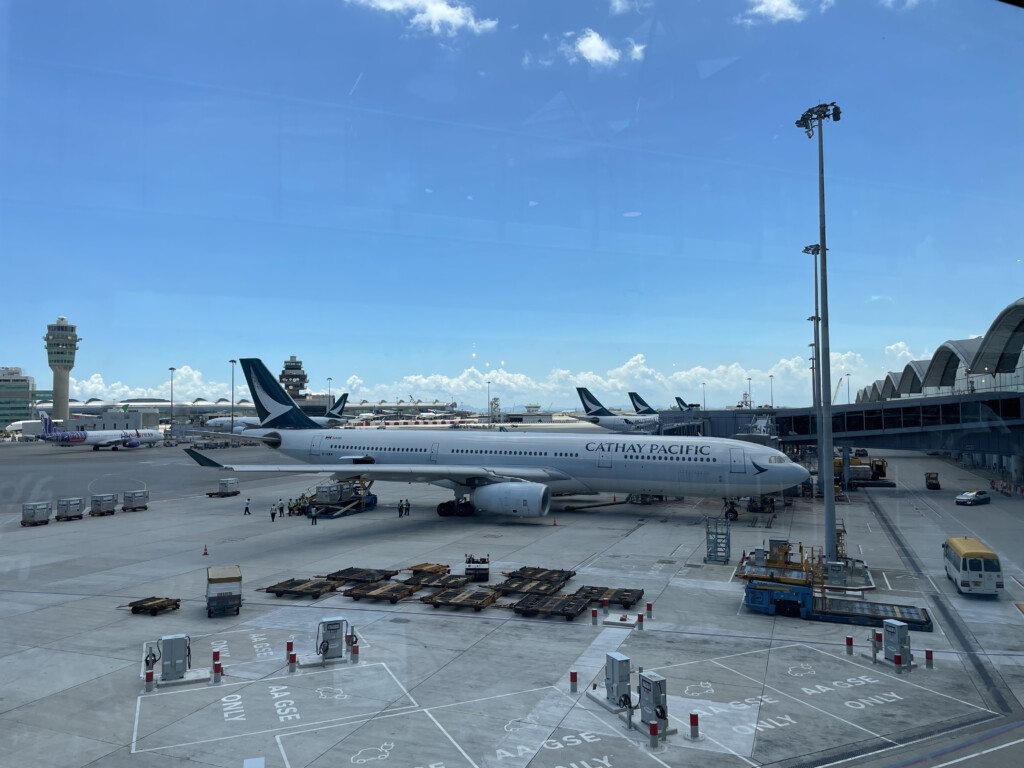
Cathay Pacific Airbus A330-300
Exploring Cathay Pacific’s A330 Configurations
Fasten your seat belts…
According to airfleets.com, Cathay Pacific’s A330 fleet consists of 45 aircraft – 37 of which are currently active. The remaining 8 (mostly aircraft from Cathay Pacific’s now-shuttered Cathay Dragon subsidiary) are in storage.
Pre-COVID, Cathay Pacific operated its A330s on a mix of long and short-haul flights. Hence, some A330s are equipped with a full long-haul cabin product, while others are equipped with a short-haul product. To add to the confusion, Cathay Pacific took over many Cathay Dragon aircraft after the pandemic – which were mostly configured differently to “mainline” Cathay Pacific planes.
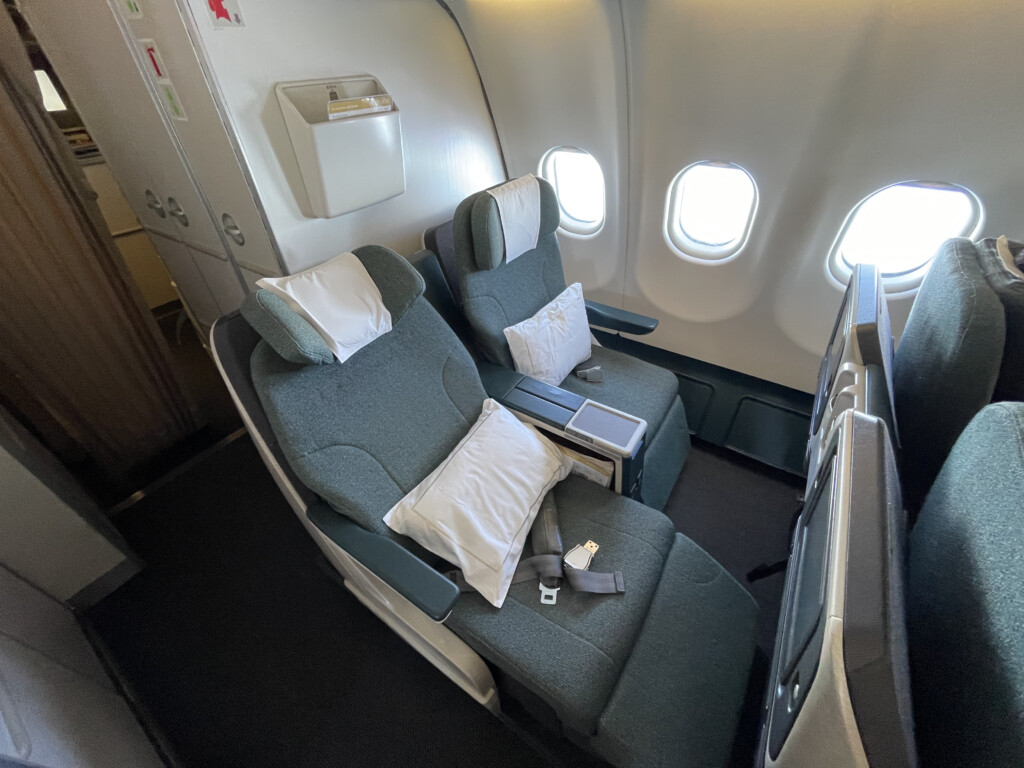
Cathay Pacific Airbus A330-300 Regional Business Class
Cathay Pacific has a whopping six different seating configurations on the A330, which are as follows:
- 33K: Equipped with a long-haul Business Class of reverse herringbone seats, Premium Economy, and Economy cabin.
- 33E: Equipped with a long-haul Business Class and a larger Economy cabin in lieu of Premium Economy.
- 33J: Equipped with a smaller long-haul Business Class and an even larger Economy cabin than on the 33E.
- 33P: Equipped with a small Business Class cabin of 24 recliners and an Economy cabin.
- 33B: Former Cathay Dragon aircraft – equipped with a larger regional Business Class cabin of 42 recliners and an Economy cabin.
- 33R: Former Cathay Dragon aircraft – equipped with a First Class cabin (which is identical to the long-haul Business Class seats on other A330 aircraft), a regional Business Class cabin of 42 recliners, and an Economy cabin.
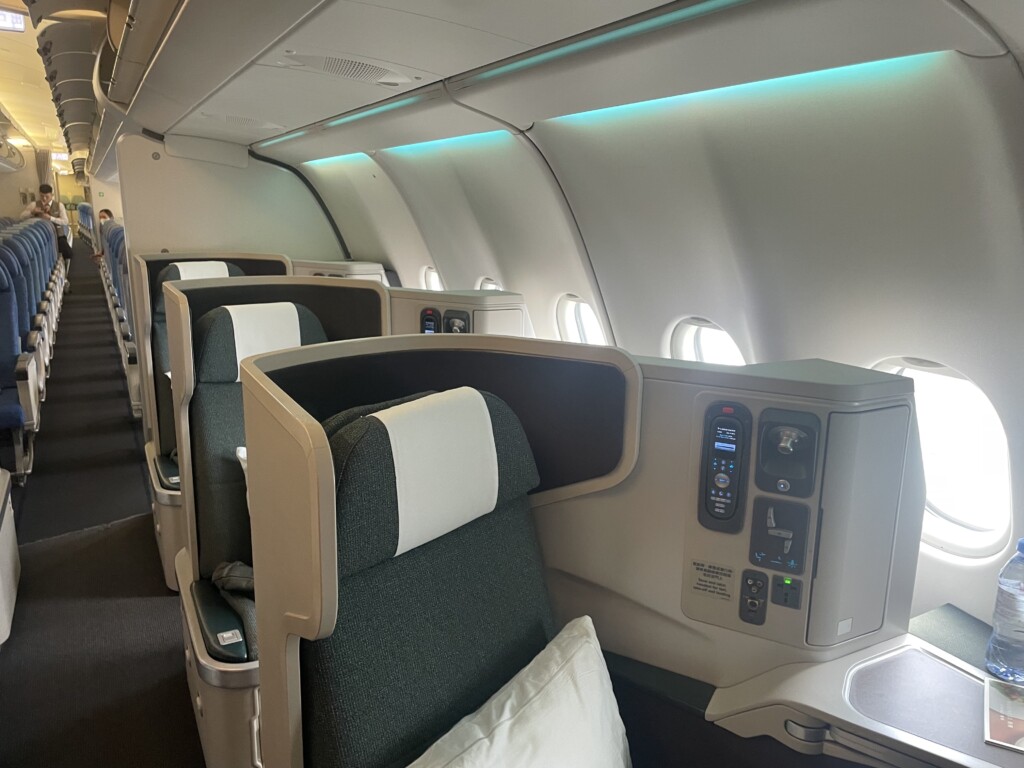 Cathay Pacific Airbus A330-300 Long-Haul Business Class
Cathay Pacific Airbus A330-300 Long-Haul Business Class
As you’d imagine, this is an absolute nightmare for Cathay Pacific’s operational reliability on shorter routes. As a real-life example, I experienced a two-hour delay on a flight from from Hong Kong to Fukuoka on the A330 due to “aircraft rotation” issues. I have a feeling that this delay was likely exacerbated by – if not caused by – the sheer number of different A330 configurations. This fleet inefficiency is also bad for aircraft utilisation in general as Cathay Pacific has less flexibility to use these planes.
How Will Cathay Reconfigure Its A330s?
According to Executive Traveller, Cathay Pacific is evaluating a “brand new” seat for its A330 aircraft, which will likely be rolled out in 2026. This is particularly interesting, as it was previously rumoured that Cathay Pacific would simply outfit its A330 aircraft with the same regional product found on Cathay Pacific’s A321neo aircraft. However, it appears that Cathay will go forward with an entirely different product.
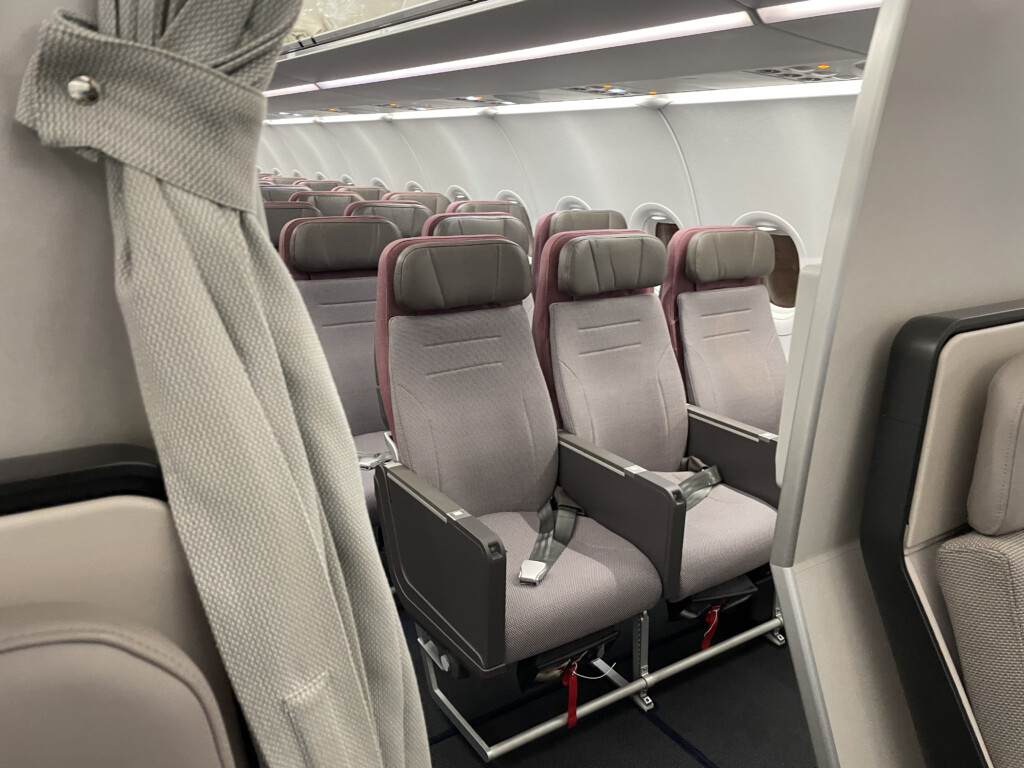
Cathay Pacific Airbus A321neo Economy Class
It’s always fun (for me, at least) to play armchair fleet planner, so I wanted to speculate a bit on how Cathay Pacific will reconfigure their A330 fleet.
Option 1: A Single, Unified High Density Regional A330 Fleet
Under this scenario, Cathay Pacific would reconfigure its A330s into a single two-class regional configuration, much like we see on the current “33P” aircraft type. These planes would come with a small Business cabin of 24 recliner seats in a 2-2-2 configuration and a larger Economy Class cabin.
- This configuration would be the most efficient when it comes to aircraft scheduling and utilisation – as aircraft can be consistently scheduled and quickly swapped in the event of delays. Furthermore, there would also be efficiencies from a reservations standpoint, as Cathay could easily predict the number of seats it can sell on each flight.
- There would also be commercial benefits to this fleet plan. Cathay Pacific’s Economy Class fares on intra-Asia routes are often priced higher than their competitors. This revenue premium is most obvious during high travel season for Hong Kong-based travellers (e.g., flights to Japan in the winter). If Cathay is able to maintain its higher prices over competitors in Economy, a larger Economy cabin may bring in more revenue for the airline.
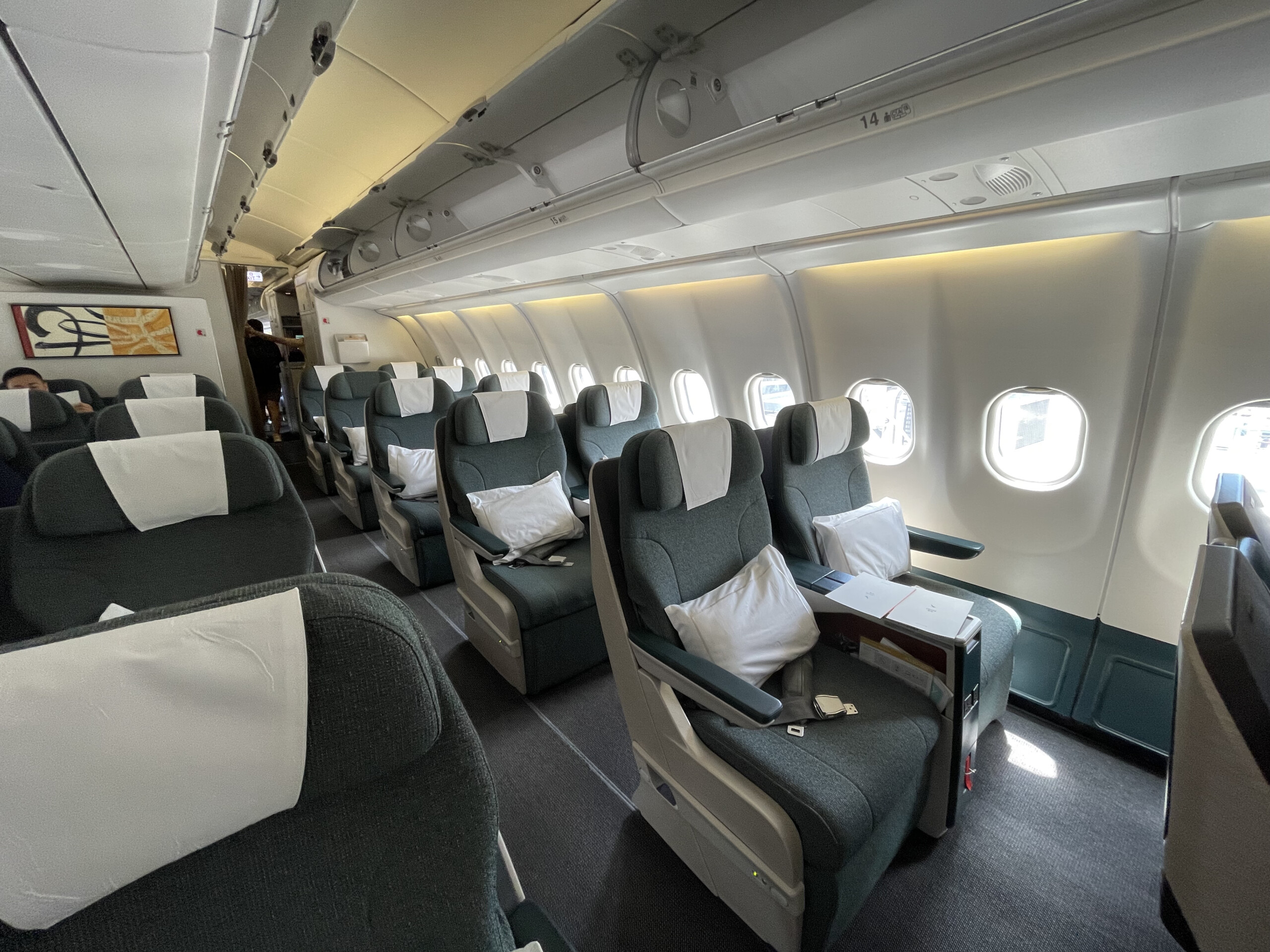
Cathay Pacific Airbus A330-300 Regional Business Class Cabin
- However, this configuration would be uncompetitive from a passenger experience perspective. Specifically, a number of Asian competitors are installing fully flat seats on regional aircraft. A recliner Business Class product would put Cathay Pacific at a significant disadvantage with its hard product offering.
- Furthermore, this option would represent a dramatic reduction in premium capacity to and from mainland China. Pre-COVID, Cathay Dragon regulated operated multiple A330s a day with 42 seats in Business Class on major mainland Chinese routes. With smaller Business Class cabins on the A330 fleet, Cathay Pacific may miss out on demand for premium travel to mainland China.
Option 2: A Mixed High and Low Density Regional A330 Fleet
Under this scenario, Cathay Pacific would reconfigure its A330s into two different configurations – one with a smaller regional Business Class cabin (much like the current 33P) and another with a larger regional Business Class cabin of 42 seats (much like the current 33B).
- This configuration is less efficient from an aircraft scheduling and utilisation standpoint, and will undoubtedly make reservations and route planning a little more challenging. Furthermore, splitting the A330 fleet across multiple configurations would make it harder for Cathay to recover from delays or operational disruptions.
- However, this mixed fleet would allow Cathay Pacific to maintain Business capacity on premium-heavy routes (e.g., from Hong Kong to Beijing or Shanghai) and boost Economy capacity on leisure-heavy short-haul routes simultaneously. In other words, this option gives the best of both worlds.
- The same concerns over seat competitiveness in Business with Option 1 would still remain.
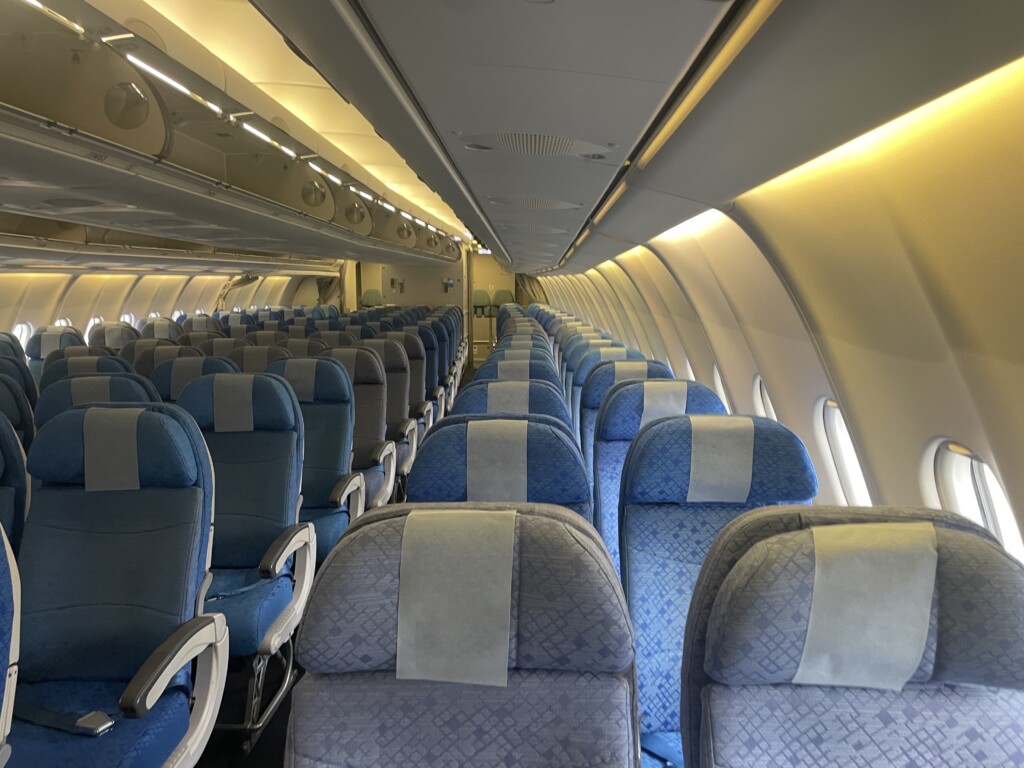
Cathay Pacific Airbus A330-300 Economy Class
Option 3: A Mixed Regional and Long-Haul Configured A330 Fleet
Under this scenario, Cathay Pacific would configure its A330s into separate regional and long-haul configurations. The short-haul aircraft would likely be equipped with a smaller Business cabin of recliner seats (much like the current 33P), while the long-haul aircraft would be equipped with a Business cabin of flat-bed Business class seats (much like the current 33J), and even a Premium Economy cabin.
- This configuration would make Cathay more competitive on short-haul routes where competitors are operating aircraft with fully flat beds (e.g., Hong Kong to Singapore). At the same time, aircraft equipped on recliner seats could be sent to destinations on sub-two-hour flights or less competitive routes (e.g., flights to secondary mainland Chinese cities like Qingdao).
- Furthermore, having some long-haul-configured A330 aircraft would provide Cathay Pacific some flexibility with how it wants to use its A350 aircraft. Currently, the A350 has fully replaced the A330 on flights to Australia and the Middle East due to its higher fuel-efficiency. However, the A350 also has the range to operate flights to Europe or North America – which the A330 cannot. If Cathay wanted to expand their long-haul network (especially in the Northern Summer high season), the A330 could serve as a replacement on some Australian routes.
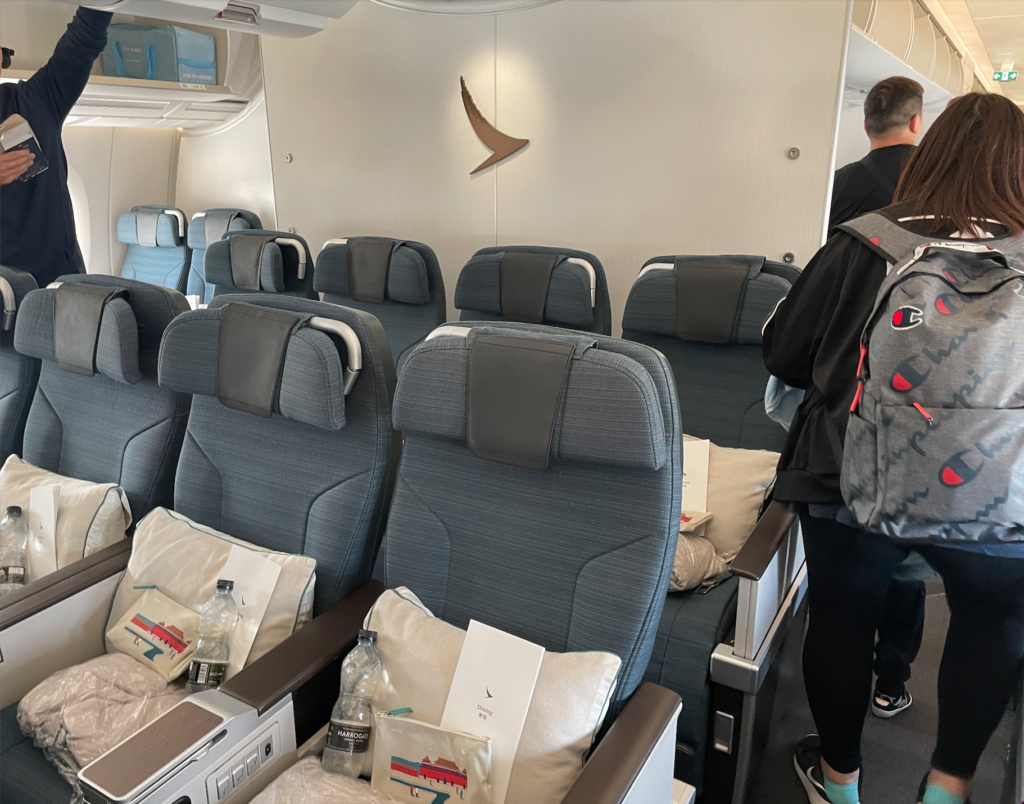
Could we see a Premium Economy product on a new long-haul A330?
- If Cathay were to refurbish some A330s to a new long-haul cabin, I wouldn’t be surprised if a Premium Economy cabin was installed. Premium Economy is now an extremely popular cabin class – even across short and medium-haul flights – and it might make sense to capture such demand.
- That being said, there would also be some inefficiencies associated with having different cabin configurations from maintenance costs to aircraft scheduling.
- Of all scenarios, I’d say this one is the most unlikely.
A New Aircraft Order?
In early January 2024, news broke that Cathay Pacific was looking for a replacement for its ageing Airbus A330 fleet, with deliveries starting in 2029. According to Airfleets.com, Cathay’s A330 fleet are an average of 17.5 years old – with some aircraft pushing past 25 years. While most A330s sat idle during the COVID-19 pandemic (hence knocking around 2-3 years off their “real” age), it’s clear that a fleet renewal plan is necessary for Cathay Pacific’s mid-sized workhorse. Some likely contenders for a replacement aircraft include the A330neo – a more efficient version of the A330 – as well as either the 787 or A350.
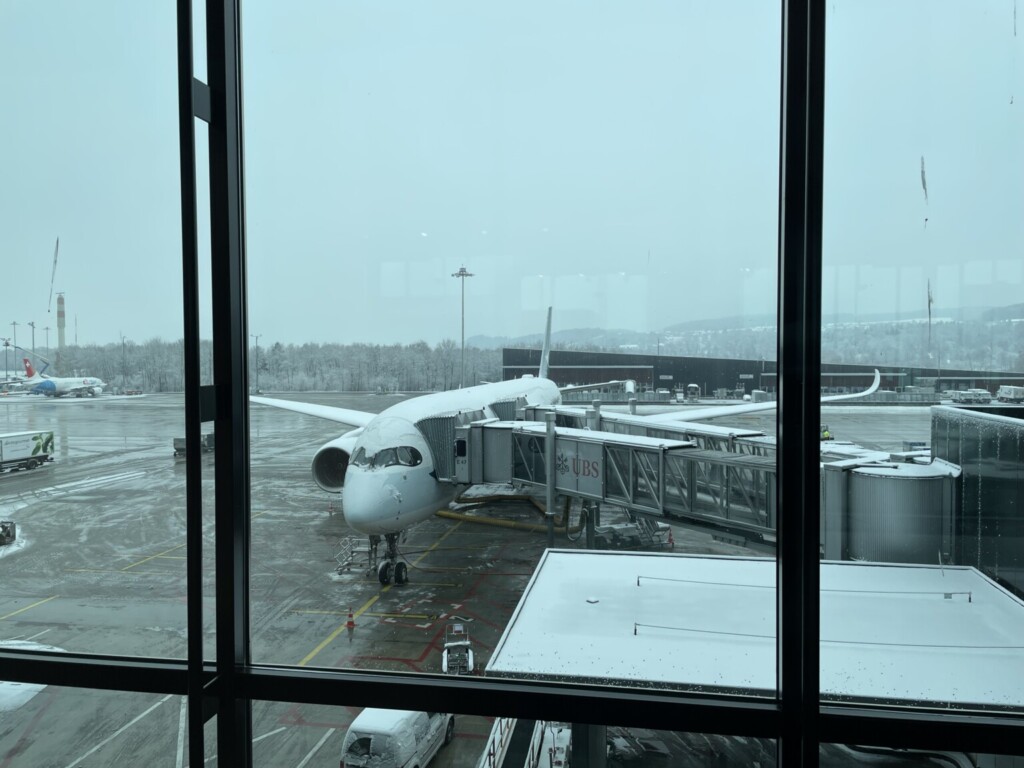
Cathay Pacific Airbus A350-900
Nevertheless, I’m curious to see how this new aircraft order might affect Cathay’s fleet planning – especially surrounding its refresh of the existing A330 fleet. Considering that Cathay Pacific is looking to order a new mid-sized aircraft for delivery by 2029 (more on that later), it doesn’t make a lot of sense to specially configure a sub-fleet of A330s for long-haul flights – only for these planes to be replaced or relegated to regional routes within a few years.
With news of this new aircraft order, I think it’s likely that existing A330 aircraft will largely continue to operate short-to-medium haul routes (sub-5 hour flights) until the end of their service lives. Hence, this makes Option 1 or 2 most likely.
Is It Time For Cathay Pacific To Rethink Its Regional Product Strategy?
To preface this, you’ll notice that I haven’t discussed much about Economy Class in this post. That’s because – for the most part – there isn’t a significant difference between Economy seating on regionally and long-haul configured aircraft on Cathay Pacific. As an example, Cathay installed the exact same seat on its ultra-long-haul A350-1000 aircraft and its brand new A321neos.
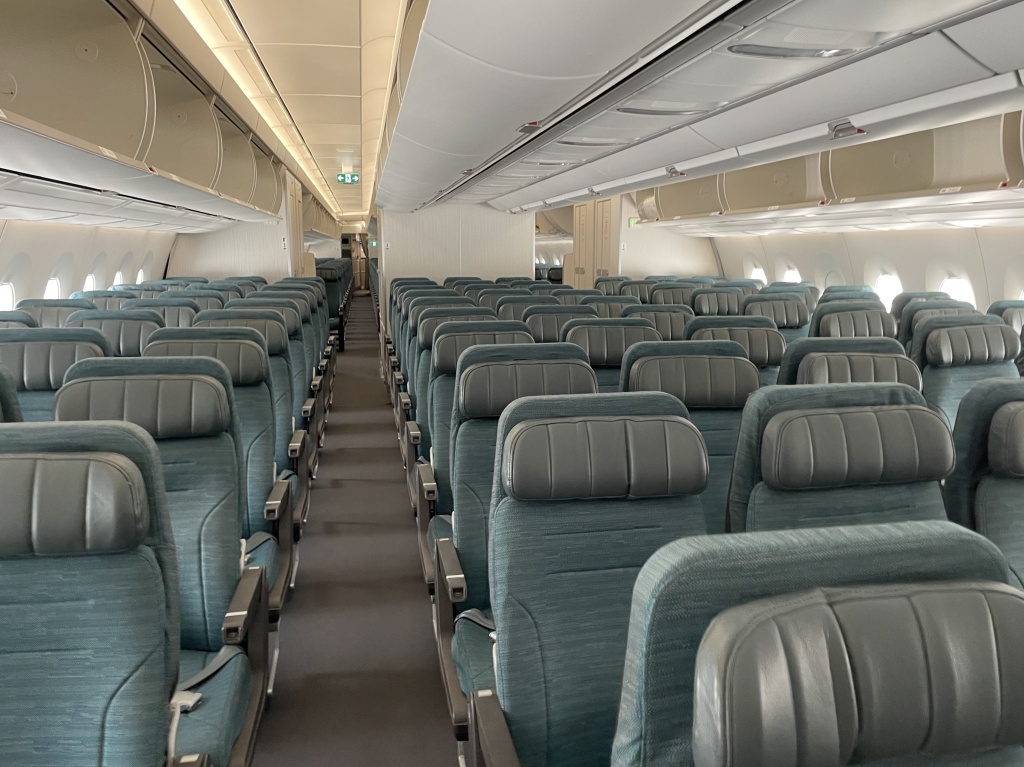
Cathay Pacific Airbus A350-1000 Economy Class
However, this isn’t the case in Business Class. As I’ve hinted at several times in this post, Cathay Pacific is a major outlier in Asia in not offering angled or fully flat beds in Business Class on short-haul, wide-bodied aircraft. For example, across the region:
- Starlux Airlines, Singapore Airlines, Malaysia Airlines, Qatar Airways, Etihad, and Qantas offer fully lie flat seats across 100% of their wide-bodied fleet.
- Thai Airways, EVA Air, China Airlines, Korean Air, Asiana, and Emirates offer either angled lie-flat or lie-flat seats in Business Class across their wide-bodied regional fleet.
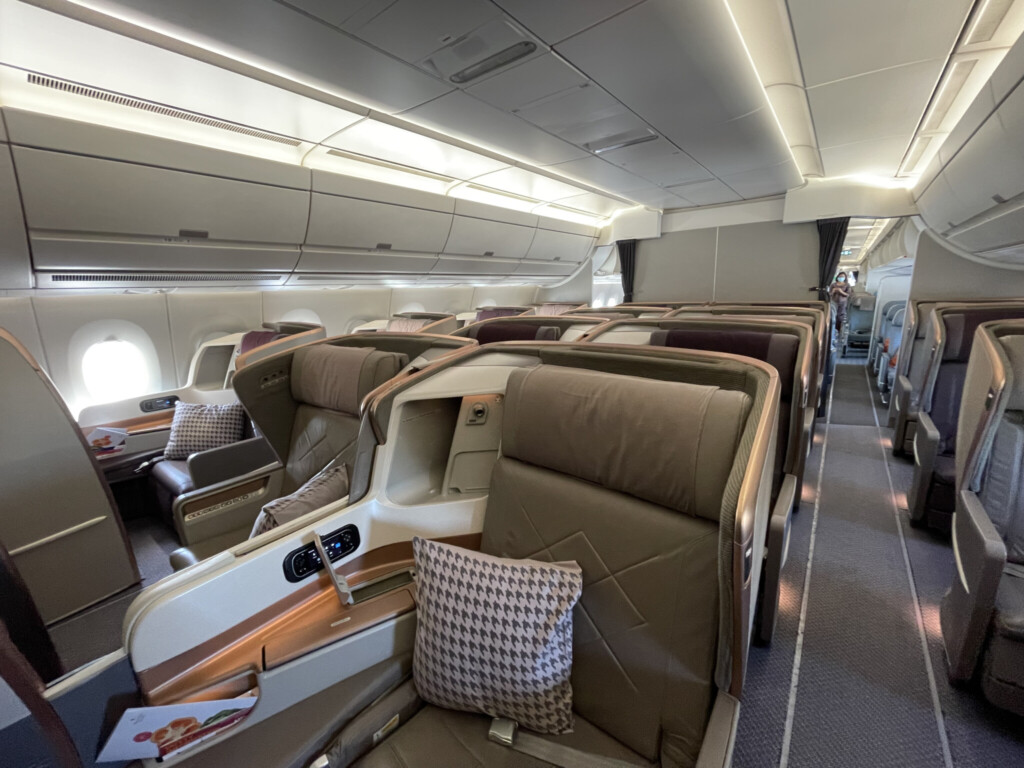
Singapore Airlines Long-Haul Airbus A350-900 Cabin
The only other major Asian airlines that offer recliner regional products in Business Class on wide-body jets are ANA and JAL. However, these aircraft exclusively fly domestic intra-Japan routes – which is a very different market to the types of routes Cathay flies.
A big reason for this is a difference in between how Cathay Pacific and other Asian carriers classify a route as “regional”. While Cathay only sends its regionally-configured jets on sub-5 hour flights, other Asian carriers often send their “regional” aircraft on on flights up to 9 hours. Regardless, Cathay Pacific’s insistence on installing a recliner regional product on its wide-bodied regional fleet is putting it the airline at a competitive disadvantage.
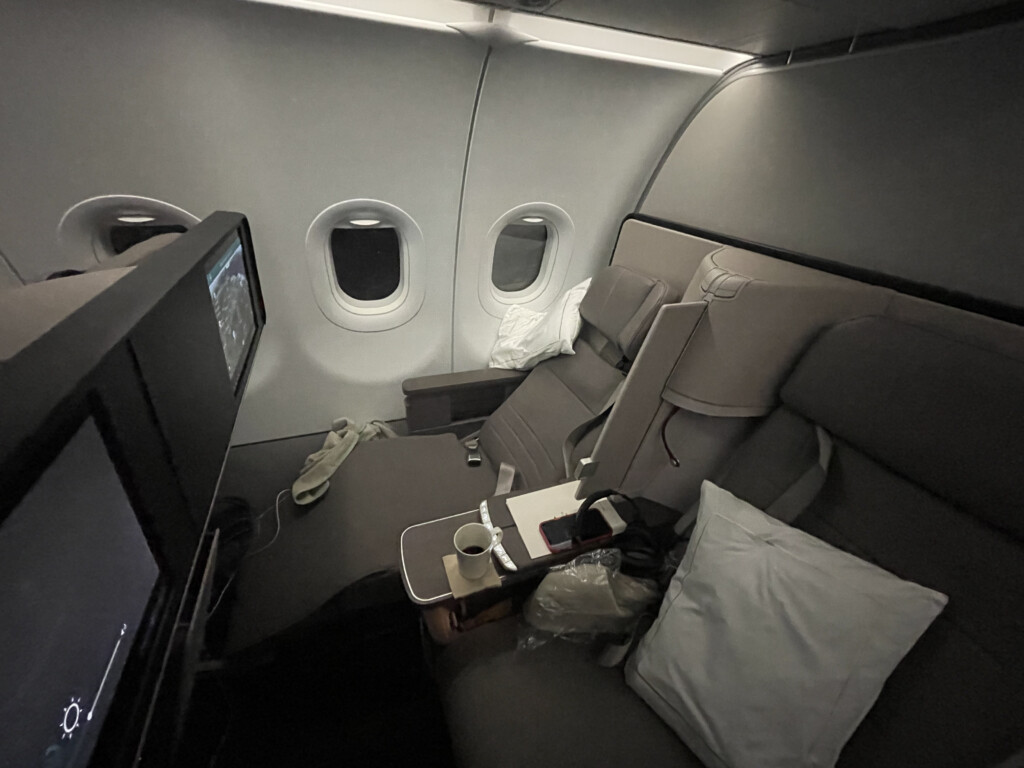
Cathay Pacific Airbus A321neo Business Class
While I personally agree that you don’t really “need” a flat bed on a sub-5 hour flight, I feel like that’s not necessarily a view shared by most travellers in Asia.
With a new aircraft order looming on the horizon, it might be time for Cathay Pacific to rethink how it configures and designates its mid-sized regional aircraft. Specifically, with the delivery of longer-range and fuel-efficient aircraft, Cathay may want to look at installing a flat-bed product across its entire wide-body fleet and expanding the types of routes that “regional” aircraft are operated on.
Conclusion
Cathay Pacific will be updating its Airbus A330 aircraft to streamline the seating configuration across the fleet. Frankly, this exercise feels like more of a temporary solution until Cathay can get its hands on a fleet of brand-new, mid-sized aircraft. That being said, I’m curious to see what Cathay will come up with. While it’s extremely likely that existing A330s will simply get a new regional recliner seat in Business Class and an updated seat in Economy, I’m curious to see if we might see something special come from Cathay Pacific.
